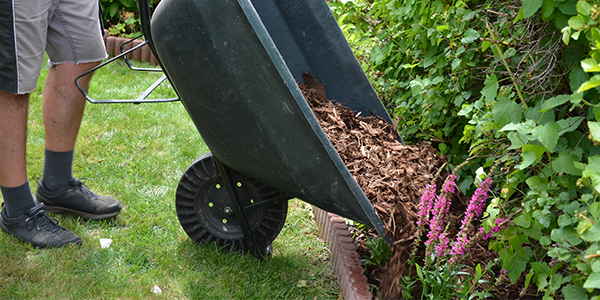Several people search for innovative ways to manage weeds and pests with little to no use of toxic materials. Integrated Pest Management (IPM) uses preventative measures, careful monitoring, and control strategies. Although IPM can be a complicated process, its main principles can be applied to your garden this year to minimize pests. Read the principle below to safeguard your lawn this spring.
Environment and Pest Monitoring
Foremost, a key pest management tool is assessing your plants to determine which ones are weaker or more vulnerable to pests. This can include plants that are nutrient deficient. If you find any plants that may be susceptible to pests, utilizing plant companions can deter pests. Using herbs such as chives, rosemary, and coriander can deter common pests such as aphids. After assessing and modifying your plants, to avoid using chemical intervention, regular inspection of plants can help you curtail pests from growing before they get out of hand. If you spot a pest or any pest-associated plant damage, you will want to correctly identify the pest to find the appropriate pest management intervention. To do this, you should identify the affected plant, and utilize local pest identification guides. Accurate identification is key to IPM as not all pests can be controlled by the same method. A helpful tip is to reverse image search online for both the affected plant and pest. This can often result in pest identification.

Pest Management: Cultural and Mechanical Intervention
After identifying the pest, the next step should be a cultural intervention which means manipulating the environment to promote plant health while minimizing pests. Fertilizing the soil appropriately can enhance plant health so they can resist pests. Cultural intervention also means minimizing drought stress in plants so layering mulch over the soil to retain water and create a barrier to discourage soil-loving pests. Similarly, overwatering should be avoided. Some pest populations can be reduced by using reflective mulches such as aluminum foil or spraying landscape fabric with silver spray. Mechanical intervention such as hand-removal of insects can be an efficient method if insect populations are low. Pruning plants that are affected or their removal can also be effective in curtailing pest growth.
Pest Management: Biological Intervention
Increasing the amount of diversity and vegetation in your lawn can increase the number of natural enemies and provide sustainable biological control. This is also why plant companions and permaculture can be incredibly useful for pest management. Another option is purchasing and releasing insects but is most effective if they have appropriate plants to thrive on. Insects to consider embracing in your yard as natural pest control includes wasps, spiders, ground beetles, ladybugs, and lace bugs.
To purchase organic materials to help deter pests such as mulch, landscape fabric, and fertilizer to strengthen plant health, Kurtz Bros., Inc. has it all! Contact us today. Our associates would be happy to assist you.
